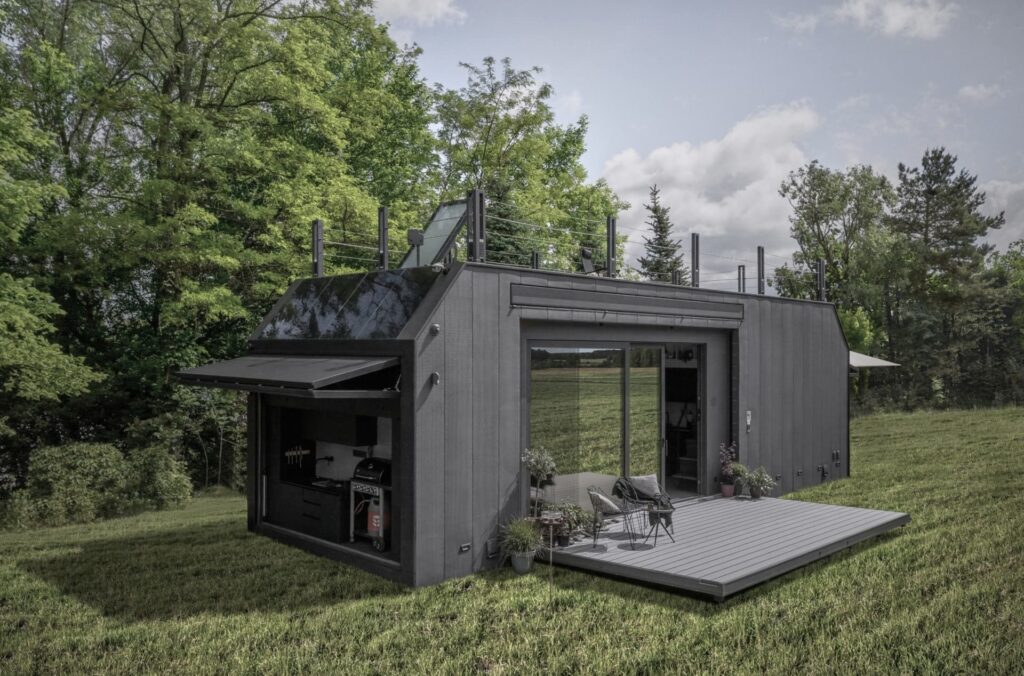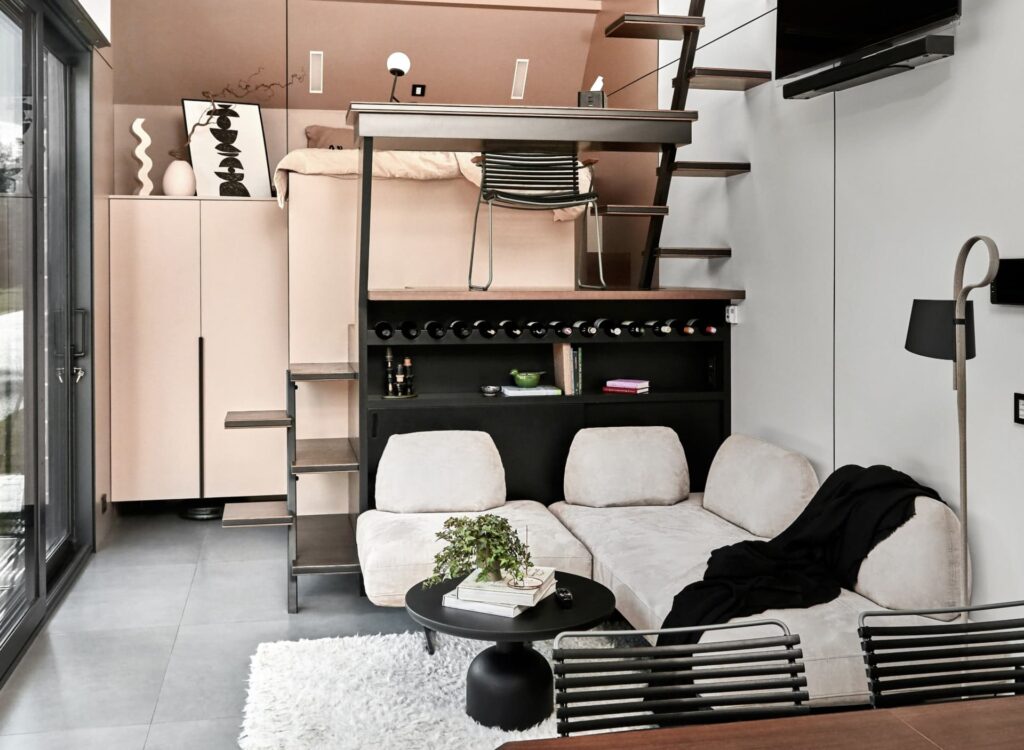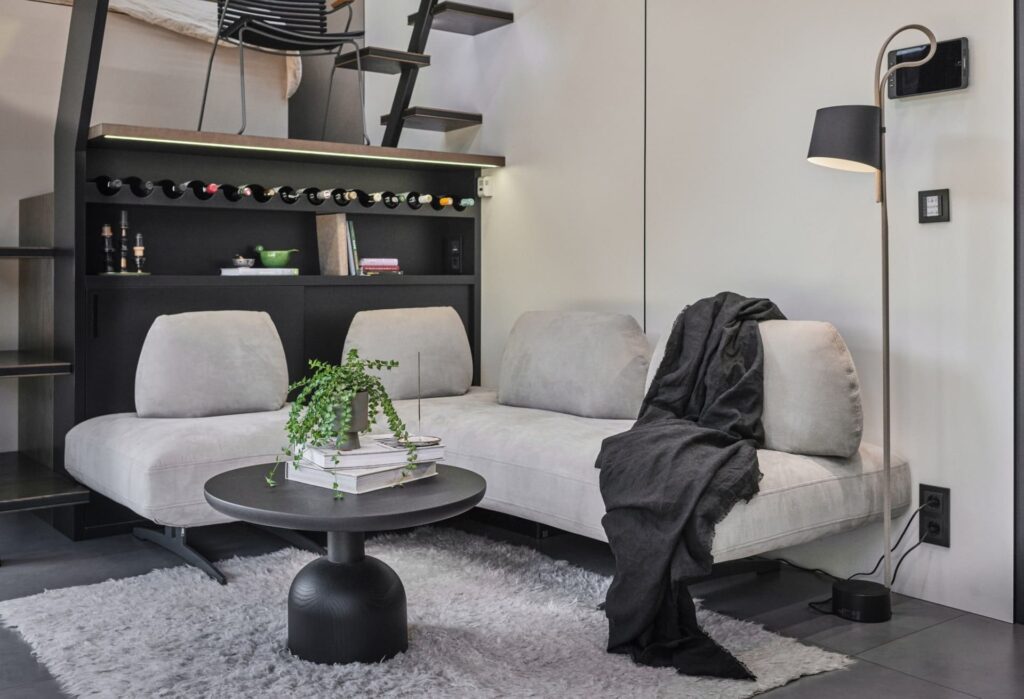
In June 2021, ZV Development became a member of the Canadа-Ukrainе Chamber of Commerce. It has been engaged in the production of the unique modular houses built using Prefab technology, which gives ZV Development confidence about the Ukrainian products’ ability to create relevant competition in the North American market.
Sergei Samusev, the founder of ZV Development, has given us this interesting interview, where he tells us what inspired him to be a part of an innovative modular construction business in Ukraine and his first impressions of seeing the transportable modular house in Canada.
The difference in the construction market progress in Ukraine and Canada is huge. In your opinion, what has been the main reason for this?
There are a series of mental and historical reasons. They have determined the development vectors of both markets. Talking about Ukraine, there were no correctly formed customer requests in the construction market.
People who have bought our houses had previously lived in multi-storey and private houses. All these buildings had been erected in different periods. Soviet and post-Soviet architecture institutes didn’t pay much attention to the design of private houses, new technologies and materials due to the lack of demand from the customer’s side. Therefore, when demand had increased, it was almost impossible to find a specialist.
Moreover, at that time the builders as a class didn’t exist. Almost all of them came from Kyivgorstroy, the state-owned developer which used existed technologies and materials.
There was also a large difference in the availability of materials in Ukraine and Canada, too. Even 20-30 years ago, it was quite easy for the Canadian consumer to buy required materials and tools such as paint, glue, ready-made standard solutions.
There were no stores like these and no available materials in our country. As a result, it was necessary to produce some building materials manually using available tools. Absence of professionals, materials shortage and other reasons resulted in appearance of abandoned and unfinished cottage townships.
Was these the main reason prompted you to adopt the foreign experience?
Indeed. I realized that solution can be simple: quick development in terms of the construction quality, finishing, and engineering infrastructure. As a start, I began to study the experience of Canada, as well as Germany, Finland, and the USA. It was crucial to find out what was the secret of the construction speed and quality, and what technologies and methods of labour organization existed.
To get the full experience, we even sent our workers abroad and invited some builders from Canada, so that the teams would get used to working together. Once I ordered two American-designed houses, they were kept in two containers. The houses were like a construction set, the complete set included everything we could imagine to build it, including even the nails, gaskets and 110-volt boilers.
Along with these containers, a team of Canadian builders arrived in Ukraine. Later we started to build houses at the same time, two Canadians were responsible for one of these houses, and our construction team of 20 people were dealing with another one. It was a unique experience exchange.
What impressed you the most about Canada’s construction methods?
In Canada, I saw with my own eyes some practical models that prompted me to think about changes. As a result, a new vision of the construction industry’s future was formed. It was incredible to see the whole chunk of a house being driven down a Canadian road, a huge moving structure hanging from a trailer. We had nothing like that.
I realized it was an opportunity to move the construction site to the workshop, so our builders turned into blue collar workers. Construction under the roof solves the multiple external issues in the construction process. People don’t have to work in extreme hot or cold weather, as it affects timing a lot. Quality control is simplified, labour productivity is increased. The employers’ safety issues and material resources preservation are part of the problem solution, too.
What modular objects have already been brought to life by the company?
As a part of modular construction, we have created two prototype projects: the “Sola” capsule dwelling module and the Family five-module house. Half a dozen projects are waiting in line.
“Sola” is a capsule unit and I would say, it’s more of a gadget than a house. This is a transportable living capsule with a high degree of autonomy and many tech features. We are proud to say that all embodiments are made directly at our factory by our workforce. From the lift-and-fold doors, modern solar energy solutions, anti-vandal enclosing surfaces and closing apertures to a robotic arm used to move the TV and the artificial intelligence system – everything was developed and built by our team
Another project, “Family”, looks more like a standard frame-transom house. It’s created using Prefab technology. “Family” is entirely made in the factory, including furniture and decor items. The house construction takes 22 hours, from loading the modules in the workshop to completing installation at the construction site.
What new opportunities do modular homes provide?
The most essential one is the ability to manage space and area depending on the family’s growth and wealth. If changes occur, you can add new bedrooms, offices, gym, sauna, bathrooms, or even entire floors at any time.
The second one is mobility. Our concept allows the house to be pulled apart into modules, transported to another location and rebuilt in a few hours. This will be useful if the family is changing their location and doesn’t want to sell the old house and buy the new one.
This amazing transformation of immobile real estate into movable property also makes a sale much easier. If necessary, the house can be sold the same as a used car to another region, for example. A new house, more modern or designed for different consumer needs, will be erected at the same place in a very short time.
The Canadian market is better prepared for modular products than the Ukrainian one at the moment. We believe our high-quality, Ukrainian-produced modular homes can be in demand on the Canadian market. The understanding of the modular construction benefits in Canada is formed by years of related product usage.







